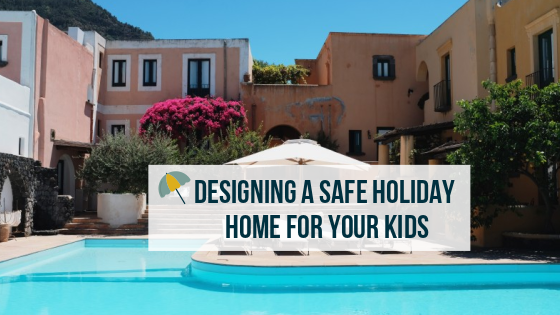One in 10 British adults now owns a second property, according to research compiled by the Resolution Foundation.
The analysis shows that only 3.4% of these owners let their second homes out, meaning that most are using them either as an investment or as holiday homes. The statistics are fascinating, considering that overall home ownership has plummeted.
In addition to owning property in the UK, some British people are opting to own homes abroad, in countries such as Spain, where areas like the Sunshine Coast lure with their promise of sea, sun, and sand, 365 days a year.
If you have recently bought a holiday home and you have little children, don’t forget to ensure it is completely childproof. It can be tempting to be more relaxed when you are on holiday, but accidents can happen at home or away.

Where do most accidents happen?
It is important to look well at the design and layout of your home in order to define the areas that pose the greatest risk for falls and other accidents kids can be prone to.
Renowned paediatrician, Dr. Dina DiMaggio, recommends that parents get down and pretend they are a toddler, identifying any potential dangers for kids at eye level.
Some of the riskiest areas in homes include the stairways (use baby gates to avoid falls); kitchens, bathrooms.
Storage spaces containing medication, toxic cleaners, and other chemicals; and kitchen hobs (which are a burn risk for kids). Make a thorough list of potential accident risks and eliminate each one.
Start with the basics
Childproof furniture covering is cheap and light and should be fitted as soon as you arrive at your holiday home.
Cover sharp corners on tables and other furniture. Rethink plastic socket covers, since electricians note that they can actually activate plug sockets and harm kids. Instead, outlet covers (which completely make the socket ‘disappear’) may be preferable.
A baby gate should also be a priority on your first day; if you don’t have an open kitchen, placing a baby gate at the entrance to your cooking space is a great way to ensure children avoid nasty burns from the hob itself or from hot water and other foods while you are cooking.
Many changes can be made without making a big expenditure. Pay attention to how you store cleaning products, knives, and other potentially dangerous objects.
Store them in higher cupboards and install childproof cupboard stoppers to avoid kids opening furniture and potentially getting their fingers caught.

Thinking bigger
If you have the budget to make bigger changes, consider investing in kitchen equipment that is difficult for kids to access.
Thus, hobs with buttons at the back (touching the wall) are preferable to those with frontal hobs. Of course, you can always buy cheaper button covers, but these can be misplaced or forgotten while you are cooking.
Washing machines and dishwashers should also have all control switches out of your toddler’s reach. One very important renovation to make if you have a pool is the installation of a childproof fence.
Don’t think you have to scrimp on style for this. There are glorious glass and metallic designs that blend in seamlessly with the pool yet provide the right protection that children and pets alike need.
Also consider replacing hard flooring with wood or bamboo and remove small rugs and low lying furniture, which can be tripping risks for kids.
We have mentioned just a few ways to protect kids in your new home, but ultimately, you will need to make a thorough inspection prior to deciding important changes to be made.
Take typical foam protectors with you for furniture, and prior to moving in, make the big changes such as installing pool fences.
Finally, ensure your flooring is smooth and soft, opting for wood instead of marble and other hard surfaces. Children will tend to have tumbles and falls so softening the blow is key.
Now working as a researcher and writer, Jackie started her career in the tourism industry, and was lucky to travel the world but after becoming a mom refocused and decided to spend more time with her family. When she’s not writing, she volunteers for a number of local mental health charities and also has a menagerie of pets to look after

